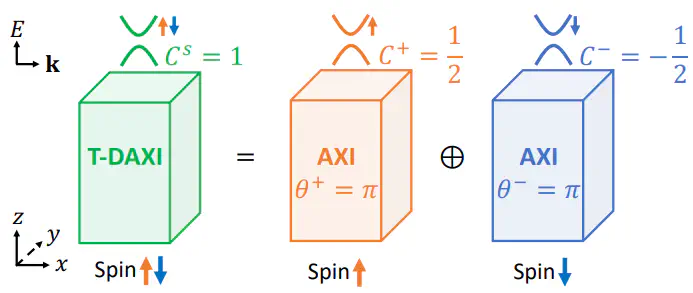Spin-Resolved Topology and Partial Axion Angles in Three-Dimensional Insulators

Abstract
Symmetry-protected topological crystalline insulators (TCIs) have primarily been characterized by their gapless boundary states. However, in time-reversal- (T-) invariant (helical) 3D TCIs—termed higher-order TCIs (HOTIs)—the boundary signatures can manifest as a sample-dependent network of 1D hinge states. We here introduce nested spin-resolved Wilson loops and layer constructions as tools to characterize the intrinsic bulk topological properties of spinful 3D insulators. We discover that helical HOTIs realize one of three spin-resolved phases with distinct responses that are quantitatively robust to large deformations of the bulk spin-orbital texture: 3D quantum spin Hall insulators (QSHIs), “spin-Weyl” semimetals, and T-doubled axion insulator (T-DAXI) states with nontrivial partial axion angles indicative of a 3D spin-magnetoelectric bulk response and half-quantized 2D TI surface states originating from a partial parity anomaly. Using ab-initio calculations, we demonstrate that β-MoTe2 realizes a spin-Weyl state and that α-BiBr hosts both 3D QSHI and T-DAXI regimes.
Experimental Note: Experimental support for our prediction of 3D ``Ising-like’’ SOC in α-BiBr provided in Nature Communications 14, 8089 (2023). Further experimental support in Phys. Rev. X 14, 041048 (2024).
Code Note: The nested and spin-resolved Wilson loop code for this work, along with example scripts and documentation, have been made freely available as User-Contributed Resources for the open-source Rutgers Python Tight-Binding (PythTB) Python package.